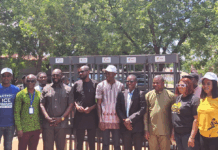International Women’s Day seeks to highlight the contribution of women and girls around the globe, who participate in their communities promoting climate change adaptation, mitigation, and response in order to build a more sustainable future for all. Women in agriculture cannot be left out of this celebration, since they have contributed enormously to the development of the country.
Marking this year’s International Women’s Day on March 8 with the theme ‘Gender Equality Today for a Sustainable Tomorrow’ is very significant as it challenges institutions and organisations to not just celebrate women but create an equal platform for them to perform like the men.
Some of the women in the agric sector who are working tirelessly to keep their business thriving while building a sustainable industry must be given opportunities that will help them flourish. It is through these women’s efforts and contribution that we have witnessed successful stories being told in diverse ways about the increase in production of food in the country.
The agricultural sector’s contribution to GDP is significant and we will do better if the necessary attention is given to it. The sector is worth a lot of opportunities and likely to rake in a huge revenue should it be properly managed. Despite setbacks in the sector, it has also seen significant growth over the years.
Women in agric
About 70 percent of agricultural production, processing and marketing in the country is mainly carried out by women, yet they face a lot of challenges ranging from limited access to productive land, insufficient access to credit funds, poverty, and lack of access to information.
Women-run farms produce less than 40 percent yields than male-run farms. The Food and Agriculture Organisation (FAO) has said the disparity is directly linked to the gender-specific challenges. With the above listed challenges and more, women are unable to reach their highest economic potential.
For a sustainable tomorrow for the agric sector, it must be ready to break the bias to close the gap existing between male and females in the sector.
Bridging the agricultural gender gap
Bridging the gender gap that exists in the agricultural sector must focus on making available, the necessary support needed to push them to upgrade in terms of production, processing and marketing.
In the area of access to productive lands, the leaders of the various associations and chiefs within the farming areas should ensure that large acres of land are made available as it is done to the male farmers. To sustain the agricultural sector, we must increase the development and prosperity of women in agriculture by granting them opportunities that are available to the men in farming.
Aside from giving large portions of lands to them, opportunities such as access to information about farming, climate change through workshops and other seminars for farmers must feature female farmers to enable them to be abreast with what needs to be done.
Giving support in the form of funds must be spread across to all farmers without considering the sex of the farmer. This will pave the way for the female farmers to increase production just as the male farmers do when supported. This will help to do away with food insecurity in the country.
The need to increase financial management knowledge to promote more financial sustainability and independence is very important. This will help them to be open-minded about how to manage funds given to them as well as gains from harvest.
Conclusion
It is very clear that women are leading the way and playing significant roles in other sectors in the country and elsewhere. While this may seem exciting, the agriculture sector remains a male-dominated business with few females fully managing their own farms and businesses.
A lot has been done, but a lot more effort will be needed before achieving gender parity in the agric sector in Ghana to push the country’s exports. The agenda to close the gender gap in the agric sector has seen groups like ActionAid Ghana implementing a lot of projects, especially in the Northern Region.
As International Women’s Day is being celebrated, leaders and stakeholders within the agric sector must rise to take action to break the bias. To inspire many other young female farmers to equally strive toward being economically empowered and growing their businesses, irrespective of which aspect of farming they find themselves in; the sector must be ready to accept the change of breaking the bias.










